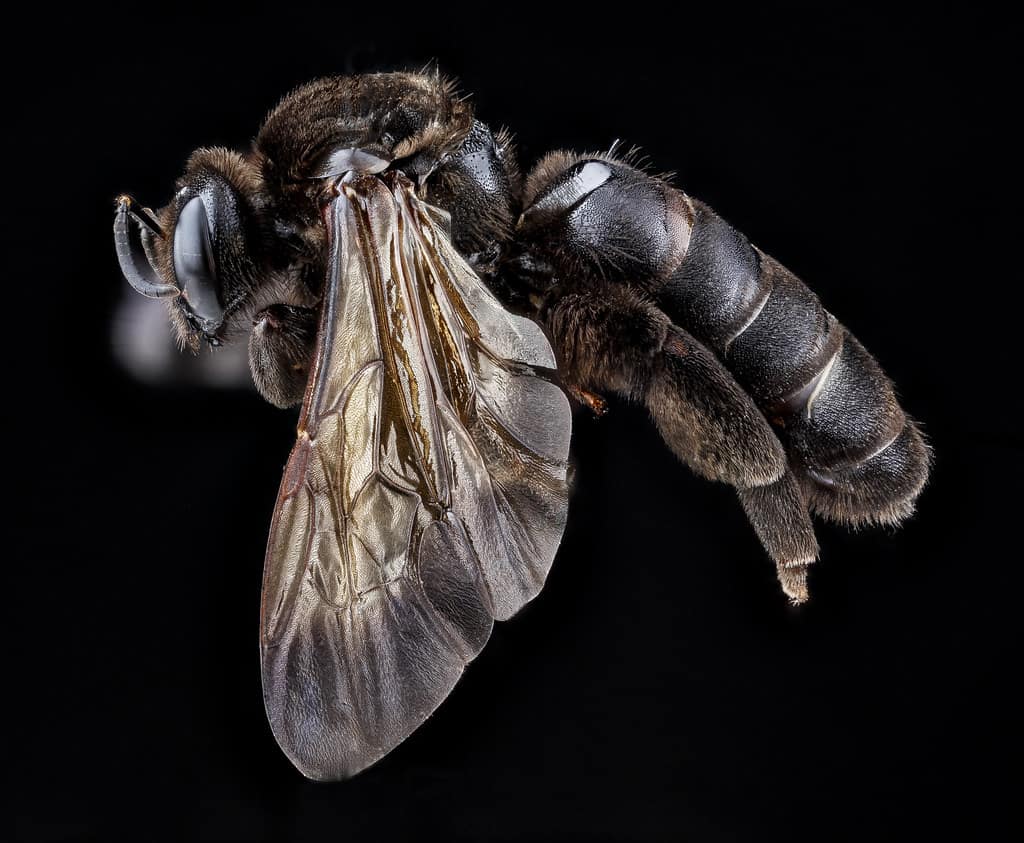Getting stung by a bee usually isn’t a pleasant experience. The majority of solitary bee species luckily don’t have a painful sting, and rarely sting unless being aggravated or accidentally crushed. Mason bees, for instance, have a sting that is often compared to a mosquito bite; you might not even notice it happens.
The downside is that some bees that are more likely to sting have a back end that means business. Eusocial bees like honey bees or bumble bees are defensive of their nests, and when there’s a lot at stake they need to let potential intruders know that they’re not going to mess around.

The pain caused by being stung isn’t a result of the stinger itself; like a tiny needle you might only notice a little poke if that was all there was to it. Instead, pain results from a complex cocktail of chemicals in bee venom, which can vary greatly and result in different reactions from the body. Generally speaking, bee venom consists of toxic proteins and peptides, which are chains of amino acids. In honey bee venom, for instance, the primary ingredient is a pain-inducing peptide known as melittin.
Pain as a result of stings is measured with the Schmidt pain index. Justin Schmidt, an American entomologist, has been stung by thousands of insects during his research, and in 1979 decided to start an index based on the pain caused by the sting of each bug. He ranks them on a scale of 1 to 4, where 1 is mildly painful and 4 is unbearable and excruciating. Luckily, no bees fall under level 4, and only fall under level 3 when stung in particularly sensitive areas.
Tropical Carpenter Bee; Xylocopa latipes
Native to Southeast Asia, the tropical carpenter bee has a shiny black body and metallic wings. It’s the largest of the carpenter bee species, and despite its intimidating size this species is very gentle and highly unlikely to sting. Be careful not to aggravate these giants, though; their sting can pack a painful punch. Male bees of all species are entirely incapable of stinging since a stinger is a modified ovipositor. That is, a tube in which female bees lay eggs from. Male carpenter bees will protect their burrows by hovering outside of them, and aren’t afraid to the face of a potential intruder and warn them to back off. If this intervention isn’t sufficient, a female bee will deliver some sharp justice. The Schmidt Pain Index ranks all carpenter bees at a Level 2.
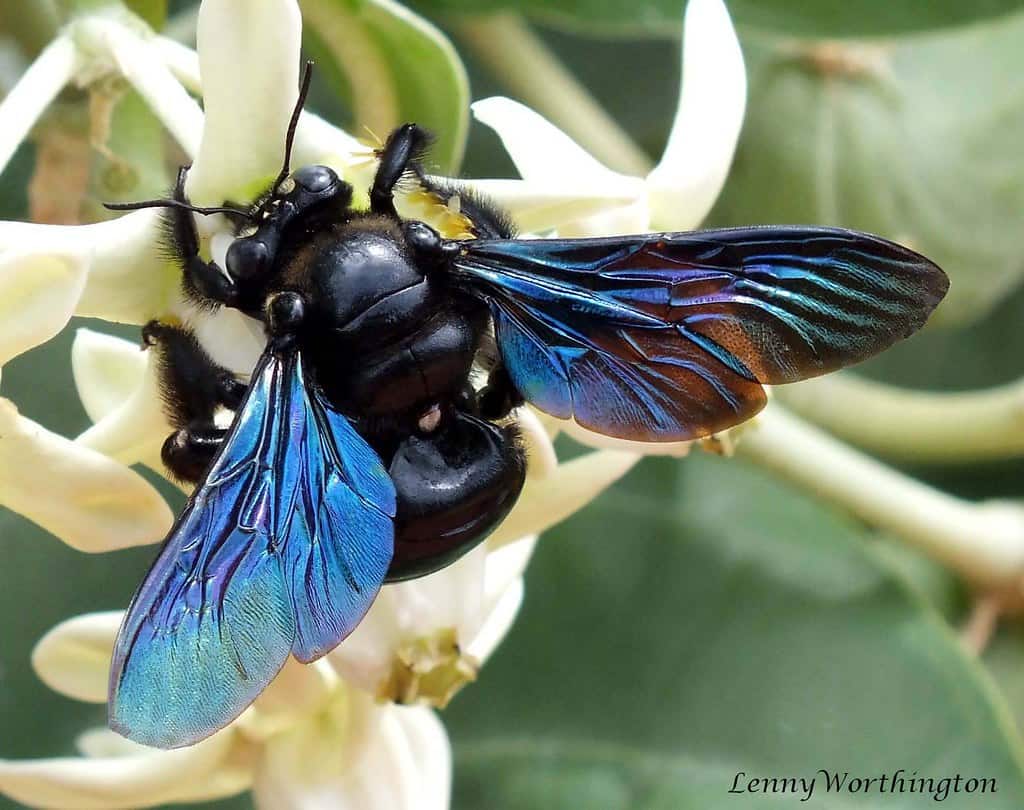
California Carpenter Bee; Xylocopa californica
Similar in many aspects to the aforementioned tropical carpenter bee, the California carpenter bee is a shiny black with metallic wings. As the name implies, they are endemic to western North America and form burrows in dead wood to rear their brood. The pain caused by carpenter bees can easily be magnified given their ability to sting more than once. Justin Schmidt describes being stung on the finger in his book The Sting of the Wild:
“Swift, sharp, and decisive. Your fingertip has been slammed by a car door.”
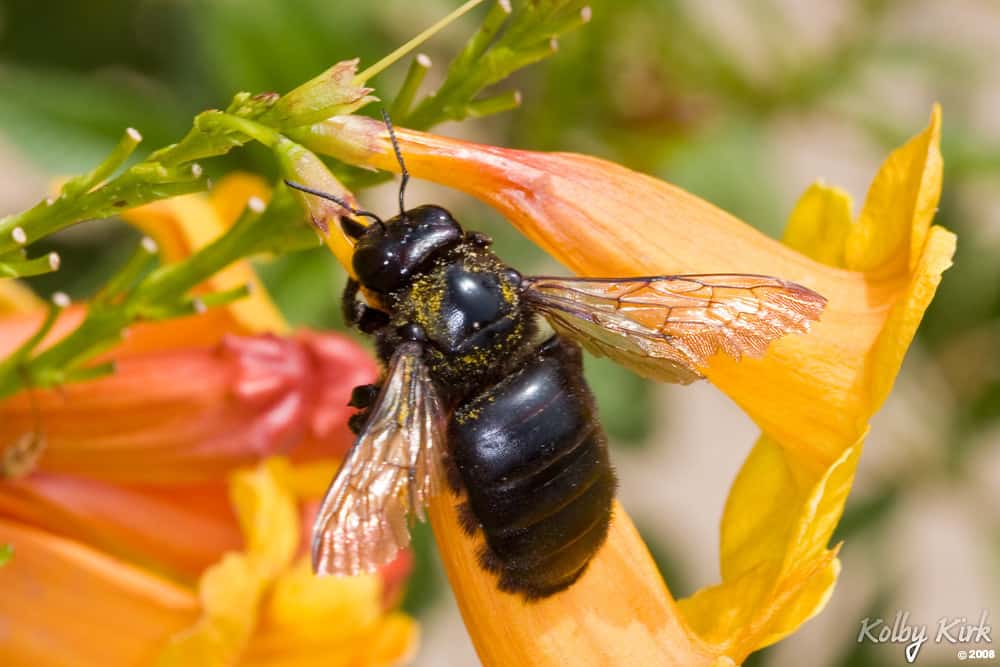
Bumble Bee; Bombus sp.
The large, fuzzy garden pollinators we know and love have a sting that is often compared to that of the carpenter bee, and has been given a Level 2 ranking on the pain index. Stings from bumble bees are uncommon; the bees are unlikely to sting while foraging, but can become defensive of their nests. Their smooth stinger also allows them to attack multiple times, adding to the threat. The bumblebee hails from all across North America, but has been popularized in other countries, especially for greenhouse pollination.
“Colourful flames. Fireworks land on your arm.”
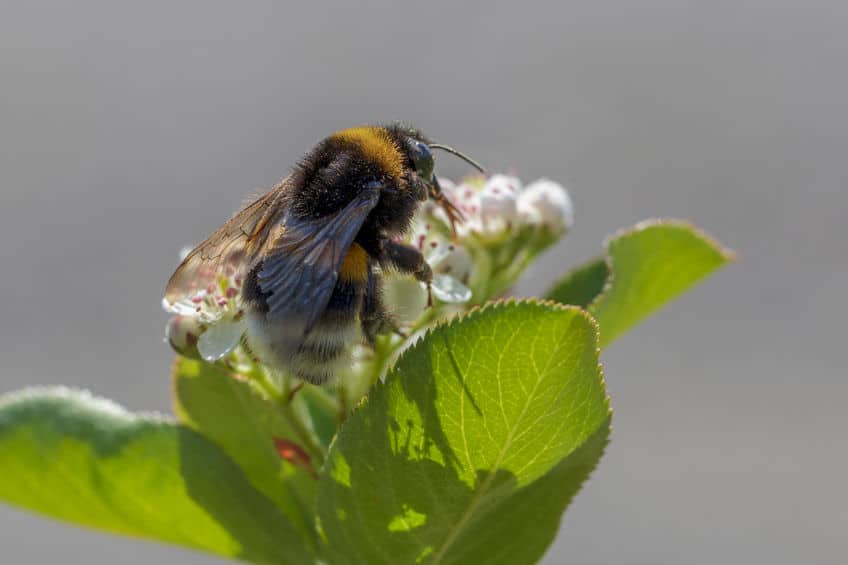
Western Honey Bee; Apis mellifera
The most infamous of all bee species, the western honey bee has its roots in Europe and Africa and has since spread its influence across every continent except Antarctica. Honey bees are well known for the fact that they typically can only sting once; their barbed stinger becomes trapped in our skin and as the bee attempts to pull away, her innards are ripped out. Although the knowledge that a bee may only sting you once may bring comfort, a typical bee hive can consist of tens of thousands of bees that can quickly spread defense pheromones, and are often known to sting in the same area as the last bee. Initially, Justin Schmidt ranked honey bee stings at Level 2:
“Burning, corrosive, but you can handle it. A flaming match head lands on your arm and is quenched first with lye and then sulfuric acid.”
On one occasion, Schmidt recalls being stung on the tongue, which he ranked a Level 3.
“It’s crawled into your soda can and stung you on the tongue. It’s immediate, noisome, visceral, debilitating. For 10 minutes life is not worth living.”
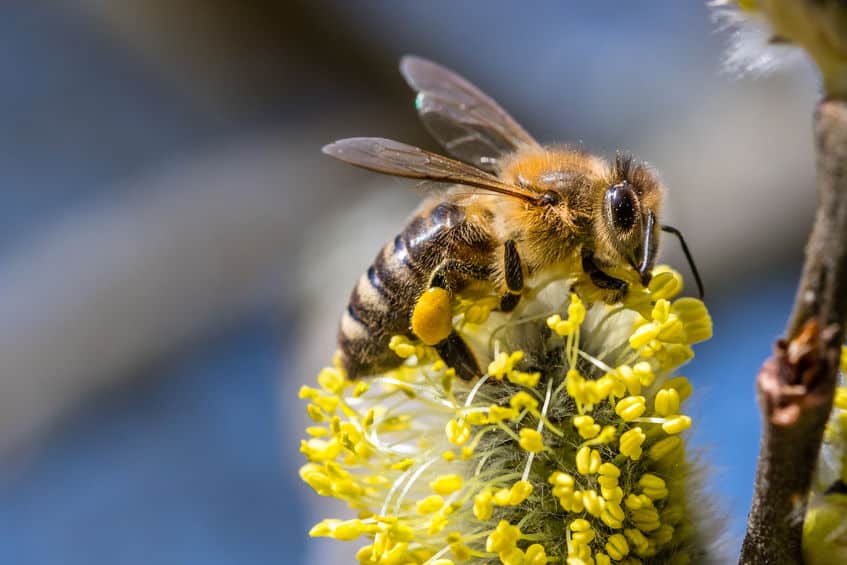
Giant Sweat Bee; Dieunomia heteropoda
In most cases of sweat bees, the sting is very minor and ranks a Level 1. In the case of the giant sweat bee, they sit halfway at a 1.5. Native to North and Central America, these gentle giants typically don’t sting. The bees are attracted to the water and salts that come from mammal sweat (lending to the insect’s name) so scaring off a source of nutrients is only done if necessary. They’re ground nesters that provide vital pollination to many native plants, but stepping on a nest or otherwise aggravating a bee could land you a sharp sting.
“Size matters but isn’t everything. A silver tablespoon drops squarely on your big toenail, sending you hopping.”
